How to Choose the stage floor lights manufacturer and supplier in us?
- How to Choose the Stage Floor Lights Manufacturer and Supplier in the US
- Why this guide matters
- Understand your stage floor lights needs
- Identify use cases and technical specs
- Evaluate manufacturer capabilities
- R&D, production scale and IP
- Quality control and testing
- Compliance and safety standards for the US market
- Required and recommended certifications
- OEM/ODM and product customization options
- What to expect from OEM/ODM suppliers
- Pricing, total cost of ownership and commercial terms
- Beyond the unit price
- Typical commercial terms to verify
- After-sales support, warranty and spare parts
- Support expectations
- Logistics, shipping and US import considerations
- Shipping options and timeframes
- Customs and compliance
- How to vet a stage floor lights supplier — practical checklist
- Questions to ask potential manufacturers
- Red flags to watch for
- Comparison table: key criteria and what to expect
- Supplier snapshot: LQE (example partner profile)
- Negotiation tips and sample procurement timeline
- Conclusion
How to Choose the Stage Floor Lights Manufacturer and Supplier in the US
Choosing the right manufacturer and supplier for stage floor lights is a critical decision for production managers, rental companies, theatre designers, and lighting buyers in the US. The right partner ensures product reliability, safety compliance, timely deliveries, and cost-effective customization. This guide explains what to evaluate, which certifications matter for the US market, important commercial terms (MOQ, lead time, warranty), and a practical vetting checklist. It is written to help you make an informed choice and reduce procurement risk.
Why this guide matters
The behind How to choose the stage floor lights manufacturer and supplier in US is transactional and informational. Buyers want practical criteria, supplier comparisons, compliance and logistics guidance, and a checklist to vet manufacturers—often in preparation for purchase, RFP, or sourcing alternatives. This article answers those needs with clear steps and usable tools.
Understand your stage floor lights needs
Identify use cases and technical specs
Different projects require different stage floor lights. Identify the primary use cases before contacting suppliers:
- Concert touring and live events: rugged fixtures, fast rigging, DMX/RDM or Art-Net compatibility, high refresh rate.
- Theatre and performance: accurate color rendering (CRI 90+ where needed), silent operation, smooth dimming curves.
- Broadcast and studios: flicker-free LED drivers and high frame-rate compatibility.
- Installations (nightclubs, theme parks, houses of worship): long-term reliability, IP rating as needed, easy maintenance.
Key technical specs to define:
- Light output (lumens or lux at distance)
- Beam angle and optics
- Color temperature and CRI
- Control protocols (DMX512, RDM, Art-Net, sACN)
- Power consumption and connectors
- IP rating (IP20 for indoor, IP65 for outdoor)
- Physical dimensions and weight
Using these baseline requirements helps narrow suppliers quickly and ensures quotes are comparable.
Evaluate manufacturer capabilities
R&D, production scale and IP
A manufacturer’s R&D and production capacity indicates their ability to deliver consistent quality and meaningful customization. Ask for:
- R&D team size and experience
- Patents and unique technologies
- Annual production capacity and lead-time performance
Example: LQE (founded 2008, Foshan, China) — production base ~10,000 m², annual output up to 100,000 fixtures, and 80 national patents—shows strong R&D and manufacturing scale suitable for large-volume or sophisticated projects.
Quality control and testing
A proper manufacturer should have documented QC processes and testing equipment, such as:
- Incoming material inspection
- Aging tests (burn-in) for LEDs and drivers
- Photometric testing (IES files) and lumen maintenance (L70) data
- Environmental and vibration testing (for touring fixtures)
Request sample test reports and IES files for the exact model you plan to purchase.
Compliance and safety standards for the US market
Required and recommended certifications
For selling and using stage floor lights in the US, prioritize suppliers who provide relevant safety and electromagnetic compliance certifications:
- UL / ETL listing or recognition for electrical safety and product marking in the US
- FCC compliance for electromagnetic emissions when applicable
- CE and RoHS for environmental and material safety (useful when fixtures pass through customs)
- IEC standards for global compatibility and IP ratings per IEC 60529
Why it matters: UL/ETL certification streamlines venue acceptance, insurance approvals, and rental house credibility.
OEM/ODM and product customization options
What to expect from OEM/ODM suppliers
If you need branded products or design changes, confirm the supplier's OEM/ODM capabilities:
- Custom firmware or control mapping for DMX/Art-Net
- Custom housings, colors, logos, or user interfaces
- Ability to change optics, LED arrays, or power supplies
Check for minimum modification quantities, tooling fees, and prototype timelines.
Pricing, total cost of ownership and commercial terms
Beyond the unit price
Price is important, but total cost of ownership (TCO) is the real metric:
- Unit price vs warranty and expected lifetime (LED L70 data)
- Shipping, customs duties, and inland freight to US destinations
- Spare parts availability and local support costs
- Energy consumption and maintenance costs over lifetime
Ask suppliers for a TCO estimate based on expected annual operating hours.
Typical commercial terms to verify
- Minimum Order Quantity (MOQ): can range from sample quantities to dozens or hundreds depending on customization
- Lead time: standard production lead time for custom stage lighting often ranges from 4–10 weeks; stock items may be faster
- Payment terms: common terms include 30% deposit and balance on shipment, or LC for larger orders
- Incoterms: EXW, FOB, CIF, DDP — clarify who handles freight and customs
After-sales support, warranty and spare parts
Support expectations
A good supplier should offer:
- Clear warranty terms (typically 2–5 years for professional LED fixtures)
- Spare parts availability and lead times
- Technical documentation, service manuals, and firmware updates
- Phone and email technical support during US business hours where possible
Confirm response SLAs (e.g., 24–48 hours) for critical technical issues.
Logistics, shipping and US import considerations
Shipping options and timeframes
- Air freight: faster but costlier—good for samples or urgent replacements
- Sea freight: most economical for bulk orders, but add 2–6 weeks transit depending on port
- Door-to-door (DDP) vs FOB: DDP simplifies import but increases supplier responsibilities and price
Customs and compliance
Ensure supplier can provide necessary documentation: commercial invoice, packing list, certificate of origin, and test reports (UL/ETL/FCC) if required by customs or venue.
How to vet a stage floor lights supplier — practical checklist
Questions to ask potential manufacturers
- Where is your factory, and can we arrange a factory audit or video tour?
- What certifications (UL/ETL/FCC/CE/RoHS) do your product models hold for the US market?
- What is your annual production capacity and typical lead time for X units?
- Can you provide IES files, photometric reports, and lumen maintenance (L70) data?
- What are your MOQ, sample policy, and pricing tiers for volume?
- What warranty do you offer, and how do you handle RMA and spare parts?
- What are your OEM/ODM capabilities, prototyping timelines, and tooling costs?
- Can you provide references from US customers or case studies?
Red flags to watch for
- No verifiable certifications or test reports
- Vague or impossible-to-verify production capacity claims
- Unwillingness to provide samples or IES files
- No clear warranty or after-sales process
Comparison table: key criteria and what to expect
| Criteria | What to ask / expect | Why it matters |
|---|---|---|
| Certifications | UL/ETL for US, FCC, CE/RoHS | Safety, venue acceptance, customs |
| Production capacity | Annual output, batch lead times | Meeting delivery schedules |
| Quality control | Aging, photometric tests, QA reports | Consistent performance and reliability |
| Customization | Prototype time, MOQ for custom brands | Match design requirements |
| Warranty & support | Length, spare parts policy, SLAs | Lower long-term costs and faster recovery |
| Logistics & Incoterms | FOB/EXW/DDP options, freight partners | Clarity of responsibility and cost |
| Price vs TCO | Energy use, maintenance costs | True cost over fixture lifetime |
Supplier snapshot: LQE (example partner profile)
| Item | LQE data |
|---|---|
| Founded | 2008 |
| Headquarters | Foshan, China |
| Production base area | ~10,000 m² |
| Annual production capacity | Up to 100,000 lighting fixtures |
| Patents | 80 national patents |
| Product range | Moving head lights, static lights, stage floor lights, studio lights |
| Typical markets | Theatres, concerts, studios, houses of worship, theme parks |
| OEM/ODM capability | Yes — R&D-driven, custom solutions |
LQE’s scale and patent portfolio make it a plausible partner for US buyers seeking OEM/ODM services, large volumes, or R&D collaboration. Confirm US certifications (UL/ETL/FCC) for the specific models you need.
Negotiation tips and sample procurement timeline
- Start with samples: validate photometrics, build quality and firmware behavior on-site.
- Pilot order: place a smaller initial order (e.g., 10–50 units) to test logistics and support.
- Negotiate payment: seek balanced terms (deposit and balance on B/L or shipment)
- Include spare parts and firmware in the contract
Sample timeline for a custom batch (typical):
- RFP and technical alignment — 1–2 weeks
- Prototype and sample approval — 2–6 weeks
- Production lead time — 4–10 weeks (depends on volume and customization)
- Shipping and customs — 2–6+ weeks
Conclusion
Choosing the right stage floor lights manufacturer and supplier for the US market requires a balance of product performance, safety compliance, production capability, and reliable after-sales support. Define your technical requirements first, then vet suppliers against certifications, QC processes, OEM/ODM capabilities, and clear commercial terms. Use samples and pilot orders to validate quality and logistics before committing to large purchases. Suppliers like LQE—backed by a sizable production base and strong R&D—can be suitable partners, provided specific models have the required US certifications and proven after-sales processes.
Sources:
- Underwriters Laboratories (UL) — product safety standards and listings
- Intertek (ETL) — testing and certification services
- IEC 60529 — IP Code for ingress protection
- EU RoHS Directive and CE marking guidelines
- Industry best-practices for professional stage lighting procurement (trade literature and supplier datasheets)
Frequently Asked Questions
What certifications should stage floor lights have for use in the US?Most professional fixtures intended for sale and use in the US should have UL or ETL recognition/Listing for electrical safety and FCC compliance for emissions where applicable. CE and RoHS are useful for international shipment compliance and materials restrictions.
How long is a typical warranty for professional stage floor lights?Professional stage lighting warranties commonly range from 2 to 5 years. The exact period depends on the supplier, the component coverage (LEDs, drivers, mechanical parts), and whether spare parts are included. Confirm RMA procedures and SLA for critical repairs.
What is a reasonable lead time and MOQ for custom stage floor lights?Lead times vary: prototypes and samples may take 2–6 weeks; production of customized batches commonly takes 4–10 weeks depending on volume. MOQ depends on customization level; some suppliers accept small MOQs for standard models, while custom tooling increases MOQ.
How can I verify a supplier’s production and quality claims?Request a factory audit (in-person or video), product test reports (photometric, burn-in), IES files, and customer references. Third-party inspection reports and sample testing by an independent lab add assurance.
Should I choose a US-based supplier or an overseas manufacturer?Consider trade-offs: US-based suppliers may simplify logistics, support, and compliance, but can be costlier. Overseas manufacturers often offer better unit prices and broader OEM capabilities but require careful vetting for certifications, QC, and logistics. Many US buyers successfully work with vetted overseas factories that provide US-compliant products and local support partners.
Is it important to get IES files for stage floor lights?Yes. IES files (or similar photometric data) allow lighting designers to model fixtures in software, ensuring the correct output, beam spread, and placement. Always request IES files or photometric reports before large purchases.
The latest trends for professional stage lights in us 2026 | LQE Ultimate Insights
Everything You Need to Know About wash light moving head
The latest trends for stage lights in us 2026 | LQE Ultimate Insights
What is best led stage lights factories ? | Ultimate Insight
Distributor
Is there a minimum order quantity (MOQ) to become a distributor?
MOQ requirements vary based on the product line and market region. However, for long-term distribution partnerships, we are flexible and can start with a trial order to build trust.
What support does LQE offer to its distributors?
We provide our distributors with a full package of support, including:
Marketing materials and product catalogs
Technical training and manuals
Fast-response after-sales service
Exclusive regional pricing and policies (for qualified partners)
Priority access to new products and updates
What is your typical lead time for distributor orders?
Our standard production lead time is 15–30 working days depending on order volume and customization requirements. For stocked models or repeat orders, we can offer shorter delivery times.
How can I apply to become a distributor?
Simply fill out the contact form on this page or email us directly with your company information, market background, and cooperation intention. Our sales team will get in touch with you within 1–2 business days.
1000w
Does LQE Offer a Stage Light Design Solution?
LQE experienced team glad to supply a stage lighting configuration design solution or suggestion for projector who don’t have much experience in lighting design, project, theatre and studio.
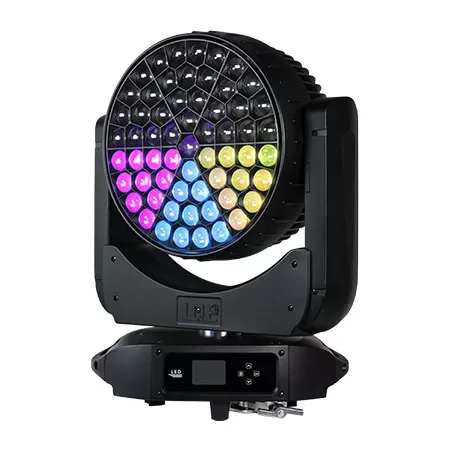
1000w 61x40w RGBW Stage Moving Head Wash Light LW1000
1000W 61x40W LED RGBW Mulichips Moving Head Wash Lights with Zoom (5°–50°), Covering Large Range and Long Distance. Designed to deliver a 5°–50° ultra-large zoom range to achieve a greater wash effect, illuminating stages and events with stunning lighting effects.

600w 19x40w RGBW Stage Moving Head Wash Light LW600 Zoom IP20
600W 19x40W LED RGBW Mulichips Moving Head Wash Lights with Zoom (5°–50°), Covering Large Range and Long Distance. IP20: Designed to deliver a 5°–50° ultra-large zoom range to achieve a greater wash effect, illuminating stages and events with stunning ring control lighting effects.

LED Moving Head Stage Wash Light LW200Z
The versatile moving head stage light provides a powerful lighting solution for theaters, concerts, and large outdoor performances. Suitable for theaters, TV stations, entertainment stages, and large outdoor performance scenes.
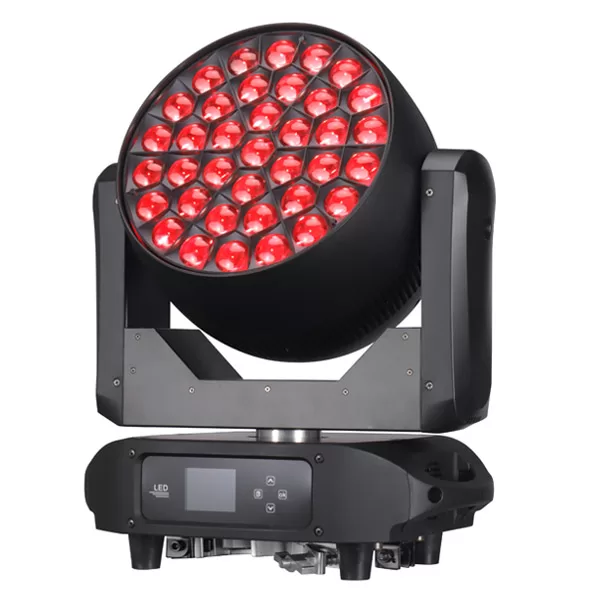
800w 37x40w RGBW Stage Moving Head Wash Light LW800
800W 37x40W LED RGBW Mulichips Moving Head Wash Lights with Zoom (5°-50°), Covering Large Range and Long Distance. Designed to deliver a 5°–50° ultra-large zoom range to achieve a greater wash effect, illuminating stages and events with stunning ring control lighting effects.

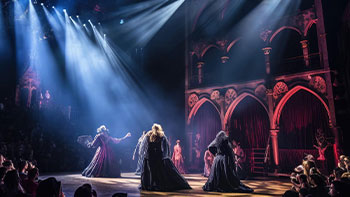
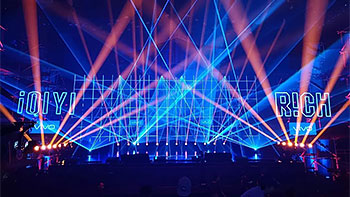

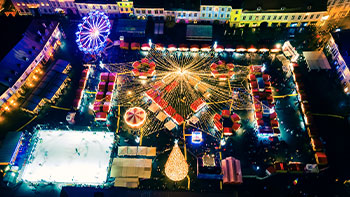








Linkedin
YouTube
Whatsapp: +8618924548390
TikTok